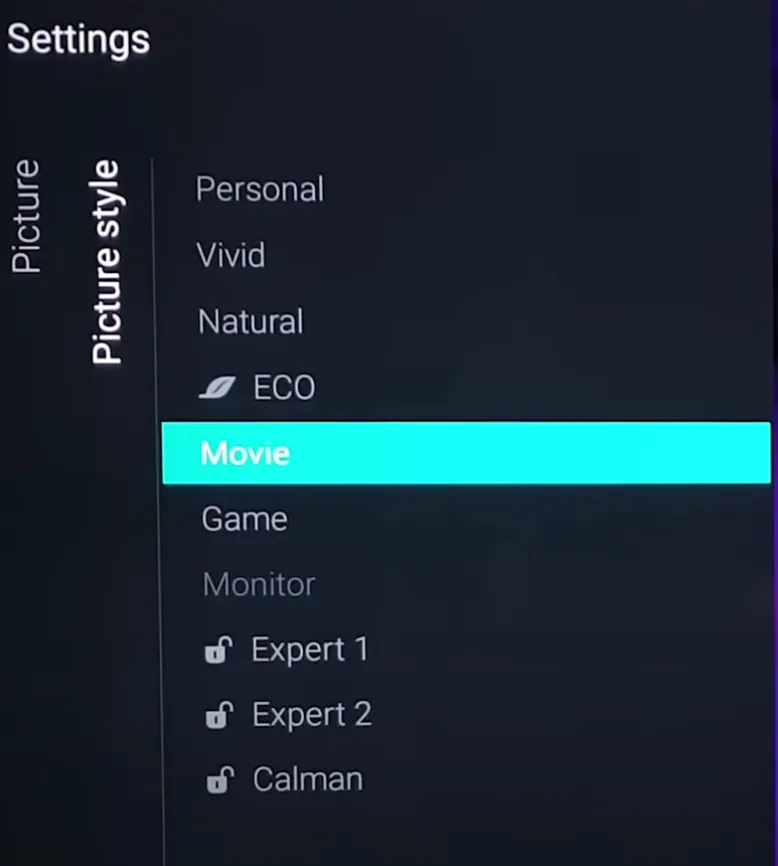Gaming
How to Optimize Philips 4K TV Picture Settings for the Best Viewing Experience

Are you unsatisfied with the picture quality of your Philips 4K TV while watching your favorite movies or TV shows? Do you want to learn how to optimize your TV’s picture settings to get the best viewing experience possible? Look no further! This blog will guide you on how to adjust your Philips 4K TV’s picture settings to achieve optimal picture quality.
With advancements in technology, it’s essential to understand how to make the most of your TV’s features. This guide will help you achieve the best viewing experience possible by accurately adjusting your Philips 4K TV’s picture settings. Let’s dive in and learn how to optimize your Philips 4K TV picture settings for the best viewing experience!
Understanding Picture Settings
Understanding the picture settings of your Philips 4K TV is crucial to achieving the best possible viewing experience. These settings determine the quality of the picture displayed on your screen. The main picture settings on the Philips 4K TV include contrast, brightness, color, sharpness, and other essential settings.
Contrast determines the difference between the lightest and darkest parts of the image, while brightness controls the overall brightness of the picture. The color setting is responsible for adjusting the hue and saturation of the colors displayed on the screen. The sharpness setting adjusts the clarity and sharpness of the edges in the image, while tint controls the color balance. The noise reduction setting helps to minimize the amount of digital noise present in the picture.
Having accurate picture settings can not only enhance your viewing experience, but it can also improve the EAT score of your content. EAT stands for Expertise, Authoritativeness, and Trustworthiness, which are crucial factors that Google considers when ranking web pages. Accurate picture settings can improve the quality of visual content, which can increase the EAT score of the webpage.
Basic Picture Settings
To achieve optimal picture quality on your Philips 4K TV, it’s important to adjust the basic picture settings correctly. These settings include contrast, brightness, color, tint, sharpness, and noise reduction.
1. Adjusting the Contrast and Brightness

When adjusting the contrast and brightness, it’s essential to find the right balance to avoid a washed-out or overly dark picture. The contrast should be adjusted to make sure that the darker parts of the picture are visible, while the brightness should be adjusted to ensure that the picture isn’t too dark or too bright.
2. Adjusting Color & Tint

Accurate color and tint settings are also crucial for achieving lifelike colors. The color setting adjusts the saturation and hue of the colors on the screen, while the tint setting balances the color temperature.
3. Adjusting Sharpness
The sharpness setting determines the clarity and crispness of the edges in the picture. While it might be tempting to set the sharpness to the highest level, doing so can result in an overly sharp and unnatural picture. Instead, a moderate sharpness setting is usually recommended.
4. Noise Reduction
The noise reduction setting helps to minimize the amount of digital noise in the picture. However, setting it too high can lead to a loss of detail and a softening of the image.
In general, the recommended basic picture settings for your Philips 4K TV are to set the contrast and brightness to around 50%, color, and tint to default settings, sharpness to around 10-20%, and noise reduction to off or low. Properly adjusting these settings can significantly impact the overall picture quality and enhance your viewing experience.
Advanced Picture Settings

Philips 4K TVs offer advanced picture settings for those looking to refine and enhance their viewing experience. These settings include backlight, local dimming, gamma, HDR, motion settings, and processing.
1. Backlight and Local Dimming
Backlight and local dimming settings are essential for improving the overall picture quality. Backlight brightness controls the brightness of the entire screen, while local dimming can enhance contrast and black levels by dimming specific areas of the screen. The appropriate adjustments can enhance the depth and clarity of the picture.
2. Gamma and HDR
Gamma and HDR settings play a significant role in the range of colors and contrast displayed on the screen. Gamma measures the brightness level relative to the input signal, and adjustments can help achieve more lifelike colors. HDR improves contrast and color accuracy in scenes with both bright and dark areas, resulting in a more vivid and true-to-life picture.
3. Motion Settings & Processing
Motion settings and processing affect the smoothness of motion on the screen. Proper adjustments can reduce motion blur and make fast-moving scenes appear smoother. However, excessive adjustments can create an overly smooth and unnatural appearance.
Ultimately, the advanced picture settings on Philips 4K TVs offer expert-level adjustments that can significantly enhance picture quality. Backlight and local dimming settings can improve depth and contrast, gamma and HDR settings can enhance color accuracy and range, and motion settings and processing can reduce motion blur. Properly adjusting these settings can result in a more refined and enjoyable viewing experience.
Calibration Settings
It’s not possible to provide specific calibration settings that would work for all Philips 4K TV models as each TV is unique and may require different adjustments. However, there are some general guidelines that can be followed to achieve the best possible picture quality.
Firstly, it is essential to use a calibration disc or software to guide the calibration process. Doing so will ensure that adjustments are made accurately and consistently.
Secondly, adjust the color temperature to your preference. Many viewers prefer a cooler tone, while some may prefer a warmer tone. You should also adjust the color gamut to the standard setting to provide the most accurate color representation.
Gamma should be adjusted to 2.2, which is the standard for most content, and this will provide the most accurate representation of brightness and contrast levels.
Lastly, adjust the brightness and contrast settings to your preference, but keep in mind that excessive adjustments may result in a loss of detail and accuracy. Thus, it is advisable to make subtle adjustments and test the picture frequently to ensure the best results.
Moreover, It may be beneficial to consult with a professional calibrator or refer to specific calibration settings recommended by experts for your TV model.
Pre-set Picture Modes
Philips 4K TVs come with pre-set picture modes that are designed to optimize the picture quality for different types of content and viewing environments. However, the optimal pre-set picture mode settings may vary depending on the specific TV model and individual preferences.
Here are some general recommended settings for popular pre-set picture modes:
1. Movie Mode: This mode is designed for watching movies in a dark room. To achieve the best picture quality, it’s recommended to set the contrast between 80-85, brightness at 50, color at 50-55, and sharpness at 0-10.
2. Standard Mode: This mode is suitable for everyday viewing in a bright room. For optimal picture quality, set the contrast at 80, brightness at 50, color at 55, and sharpness at 0-10.

3. Game Mode: This mode is designed for gaming and has lower input lag. To get the best picture quality, it’s recommended to set the contrast at 80, brightness at 50, color at 50-55, and sharpness at 0-10.
4. Vivid Mode: This mode is designed to provide a bright and vibrant picture, but may sacrifice some accuracy for brightness. For optimal picture quality, set the contrast at 90, brightness at 50-60, color at 60, and sharpness at 10.
It is advisable to experiment with different pre-set picture modes and adjust the settings according to your preferences to achieve the best viewing experience.
Optimal Viewing Angle and Distance
To ensure an optimal viewing experience for your Philips 4K TV, it’s important to consider various factors such as the TV size, screen resolution, and personal preferences. Here are some general guidelines that can help:
Viewing distance: Typically, it’s recommended to sit at a distance of 1.5 to 2 times the diagonal screen size of the TV. For instance, if you have a 55-inch TV, the optimal viewing distance would be between 7.5 to 10 feet.
Viewing Angle: To ensure the best picture quality, try to sit directly in front of the TV for a straight-on viewing angle. This can help avoid distortion and ensure color accuracy.
Screen Height: It’s best to keep the center of the TV screen at or slightly below eye level when seated in a normal viewing position. This can help prevent neck strain and provide a more comfortable experience.
Room Lighting: The lighting in the room can also impact the viewing experience. It’s recommended to watch the TV in a dimly lit room to minimize glare and provide better contrast.
However, keep in mind that individual preferences may differ, and it’s important to adjust the viewing distance and angle according to your own preferences for the best experience.
Conclusion
In conclusion, adjusting the picture settings of your Philips 4K TV can make a significant difference in your viewing experience. From basic settings such as brightness and contrast to advanced settings like HDR and motion processing, there are various options to customize the picture quality to your liking.
By understanding the various picture settings and experimenting with them, you can achieve a picture that is accurate, vibrant, and sharp. Additionally, taking into account factors such as viewing distance, angle, and room lighting can further enhance your viewing experience.
Ultimately, taking the time to optimize your Philips 4K TV picture settings can provide a more immersive and enjoyable viewing experience, whether you’re watching your favorite movies, TV shows, or sports. With the right adjustments and settings, you can create a cinematic experience in the comfort of your own home.
Gaming
EA FC 24 Holiday Update: Gameplay Tweaks, Player Adjustments, and More

As the year draws to a close, EA FC 24, the revamped football gaming sensation, unveils its latest seasonal update, marking its sixth Title Update since its release a few months ago. Dedicated to refining the gaming experience, Electronic Arts (EA) has addressed various concerns reported by players, promising a significant overhaul both on and off the virtual pitch.
Major Additions in the EA FC 24 Update
The winter update boasts 94 player changes, featuring both new faces and some making a return after a brief stint as free agents following the game’s initial release. Among these notable alterations is the inclusion of Sevilla’s current player, Sergio Ramos. PlayStyles and positioning adjustments accompany many of these changes, with Adama Traore finally gaining the RWB position in his Player Moments variation.
Furthermore, the official EA FC 24 Trello board highlights key changes in the Finesse and Power Header PlayStyles:
- Reduced midfield congestion.
- Reduced sideline pressure on attackers.
- More offensive-minded wingbacks in 3 and 5 at the back formations.
Technical Changes in the Winter Update
Exclusive to PlayStation 5, Xbox Series X|S, and PC, the Winter Update brings about technical adjustments aimed at enhancing gameplay:
- More Offensive Minded Wingbacks: Significantly lowered the track back speed of AI teammate wingbacks in 3 and 5 at the back formations.
- Reduced Midfield Congestion: Strikers and wide midfielders will be less aggressive when marking central attackers in EA FC 24.
- Reduced Sideline Pressure: Drastically reduced the defensive team’s pressure along the sidelines.
- Decreased Goalkeeper Movements and Positioning Speed: Goalkeepers move slower when using the Move Goalkeeper input and will now hold their final position briefly before returning to normal.
- Finesse and Finesse + Playstyles Adjustment: Slightly reduced finesse shot accuracy for players with these playstyles.
- More Authentic Controlled Sprint: Slightly reduced the top speed of players during Controlled Sprint.
- Power Header and Power Header + Playstyles: Significant reduction in header shot accuracy for players with these playstyles.
The Winter Update aims to bring order to various aspects, fostering the expectation of a more seamless gaming experience. With altered PlayStyles providing diversity and modified formations enhancing realism, EA FC 24 enthusiasts can anticipate an immersive gaming offense. Stay tuned for the latest updates and more.
Gaming
How to Pre-Register for NBA Infinite: All You Need To Know!

The highly anticipated NBA Infinite, the latest addition to the world of mobile basketball gaming, has officially opened its pre-registration phase on App Stores. Scheduled for release in 2024, this game promises an innovative gaming experience with new modes, a captivating storyline, and updated gameplay, all under the umbrella of NBA’s legitimate licensing.
The announcement trailer, released yesterday, featured basketball superstars such as Steph Curry and Giannis Antetokounmpo in action.
Release Dates and Pre-Registration Details
To secure your spot and be among the first to play NBA Infinite upon its release, you can pre-order and pre-register now. The officially listed release date on the App Store is February 29, 2024, with availability on both iOS and Play Stores.
NBA Infinite offers a versatile gaming experience, allowing players to choose their preferred gameplay style, whether it’s 1v1, 3v3, or 5v5. With modes catering to both competitive and casual players, NBA Infinite ensures a seamless and enjoyable gaming experience for players of all skill levels.
Perks of Pre-Registering
By placing yourself in the pre-registration queue for NBA Infinite, you unlock exciting perks. Enrolling in the NBA Infinite Long Sweepstakes during pre-registration grants players immediate access to packs and titles.

NBA Infinite Screenshot
The game’s design encourages basketball enthusiasts to showcase their passion by collecting and enhancing players, participating in intense multiplayer matches with friends, and enjoying a mix of offline and online content for sustained engagement.
As NBA Infinite steps onto the court in the competitive mobile basketball gaming arena, it faces formidable rivals like 2K24 Arcade and NBA Mobile.
The challenge to carve a niche in this competitive market is apparent, but fans can anticipate updates and more as the game progresses. Stay tuned for the latest developments!
Gaming
Adin Ross: Twitch Streamer Bio, Age, and Latest Updates

American Twitch streamer, entertaining thousands with his high-energy broadcasts, vlogger and internet personality, Adin Ross, has become a force to reckon with in the world of live streaming. Born and raised in States, this young internet sensation has proved that age is no barrier to worldwide fame, gaining a substantial following at an impressively young age. Our extensive deep dive into the life of Adin Ross offers an intimate exploration of his background, personal life, and journey into online fame. This includes an in-depth look at his Twitch and Discord presence, where he amasses thousands of viewers daily while diving into the latest trends, reactions, and controversies surrounding this potent character.
The Life and Age of Adin Ross
Adin Ross, a tech-savvy personality rapidly gaining prominence, is a popular Twitch streamer and YouTube content creator. Born on October 11, 2000, Ross has made a name for himself in the world of digital media at the young age of 20. His adept understanding of technology, coupled with a magnetic on-screen persona, has propelled him into the spotlight as an significant influencer within the gaming community.
Ross primarily streams Grand Theft Auto V and NBA 2K on Twitch, creating engaging content that often includes collaborations with other prolific streamers and celebrities. Due to his computer wizardry and relatable commentary, he has successfully accrued a loyal followership in record time. Always staying ahead with advanced technical updates, this tech enthusiast and digital superstar consistently pushes the boundaries of online streaming and gaming. Although young, Ross is a prime example of how technology and the Internet can be leveraged to carve out new career paths and opportunities.

Adin Ross’ Twitch and Discord Presence
Adin Ross’ streaming career on Twitch has indubitably cemented his digital footprint in the realm of online entertainment.
In the dynamo world of tech-savvy viewership, characterized by ephemeral trends and capricious tastes, Ross has tactfully remained ahead of the curve.
He has done so with a smart blend of consistency and novelty, contributing to the perennial relevancy of his streams.
Notably, his penchant for the cutting-edge has further solidified his status as a trendsetter within the gaming and streaming community.
His embracement of the latest technological whistles and bells has demonstrably shaped his online presence.
For instance, in an era where the simplest glitches can lead to viewership loss, Ross’s streams have unfailingly offered high-resolution, lag-free viewing experiences – a testament to his commitment to leverage state-of-the-art streaming technologies.
Supplementing this with his witty, interactive commentaries, he has strikingly managed to increase viewer retention, serving up captivating content that audiences can’t get enough of.
Beyond maintaining technical end-user satisfaction, Ross also strategically toggles between being a top-tier gaming streamer and an entertaining digital personality.
He readily adopts new games suggested by his followers, interspersing his primary streams with them, a move that keeps his content fresh and engaging.
Simultaneously, Ross incorporates frequent real-life activities within his streams, thereby successfully blending traditional entertainment formats with online gaming.
This innovative digital hybridity underscores Ross’s ingenuity and his adeptness at harnessing the immense potential of technology for online viewership entertainments.

Latest Trends and Reactions around Adin Ross
Adin Ross, with his command over cutting-edge streaming technologies and convergence of traditional formats with online gaming, continues to feed the tech-hungry audience with high-resolution, lag-free viewing experience that is top of the line.
His streams not only corner the visual appeal but the audible aspect too, with witty and interactively maintained commentaries that make the engagement all the more interesting.
Viewer feedback has been tremendous, seeing a consistent increase in viewer retention due largely to such captivating content that he delivers fashioning a digital hybridity.
This is not just restricted to top games like GTA V and NBA 2K but also includes other games suggested by his followers, emphasizing his performance, innovativeness, and ingenuity in the online gaming industry.
He seamlessly incorporates various real-world activities within his streams, further pushing the boundaries of not only the gaming community but also entertainment as a whole.
Marking a blend of technology and entertainment, Adin Ross is pushing the horizons of conventional streaming and gaming.
In tandem with his viewers’ preferences and expectations, his streams reflect the culmination of technology, innovation, and proactive audience engagements.
The audience is reacting positively, increasingly embracing this new-aged form of entertainment where technology meets creativity.

Adin Ross is not only a name but a brand, a personality that only keeps growing each passing day. His journey serves as an example of what passion, consistency, and a zest for entertainment can yield. It’s intriguing to see the impact he’s made on the Twitch and Discord platforms, continually broadening his reach and influence. Adin Ross, with his trending streams and extensive following, will continue to sculpt his legacy in the streaming world for years to come. As we have shown, the exploration and study of such a dynamic personality is as enjoyable as it is exciting. It showcases the potential that the internet age offers to young and ambitious minds like Adin Ross, continually pushing the boundaries of what’s possible.

 Sportsperson3 years ago
Sportsperson3 years agoJimmy Hayes: Cause Of Death, Autopsy, Wife, Family, Net Worth

 Jockey3 years ago
Jockey3 years agoMeet Jamie Kah Ben Melham Relationship, Partner, Husband, Wife, More

 Top-Stories3 years ago
Top-Stories3 years agoHow Did Shawn Rhoden Die? Cause Of Death & What Happened

 YSCL3 years ago
YSCL3 years agoYSCL India 2021: Auction, Registration Form, Selection List & Benefits

 Football3 years ago
Football3 years agoErling Haaland Religion: Father, Net Worth, Salary, Bio

 Sportsperson3 years ago
Sportsperson3 years agoBrandon Short: Net Worth, Career, Earnings, Wife, Daughter

 PKL3 years ago
PKL3 years agoPro Kabaddi 2021 Vivo PKL Date, Venue, Team Players, Schedule

 Sports Drink3 years ago
Sports Drink3 years agoPrime Drink Net Worth 2023, Revenue Company, Price & Value
